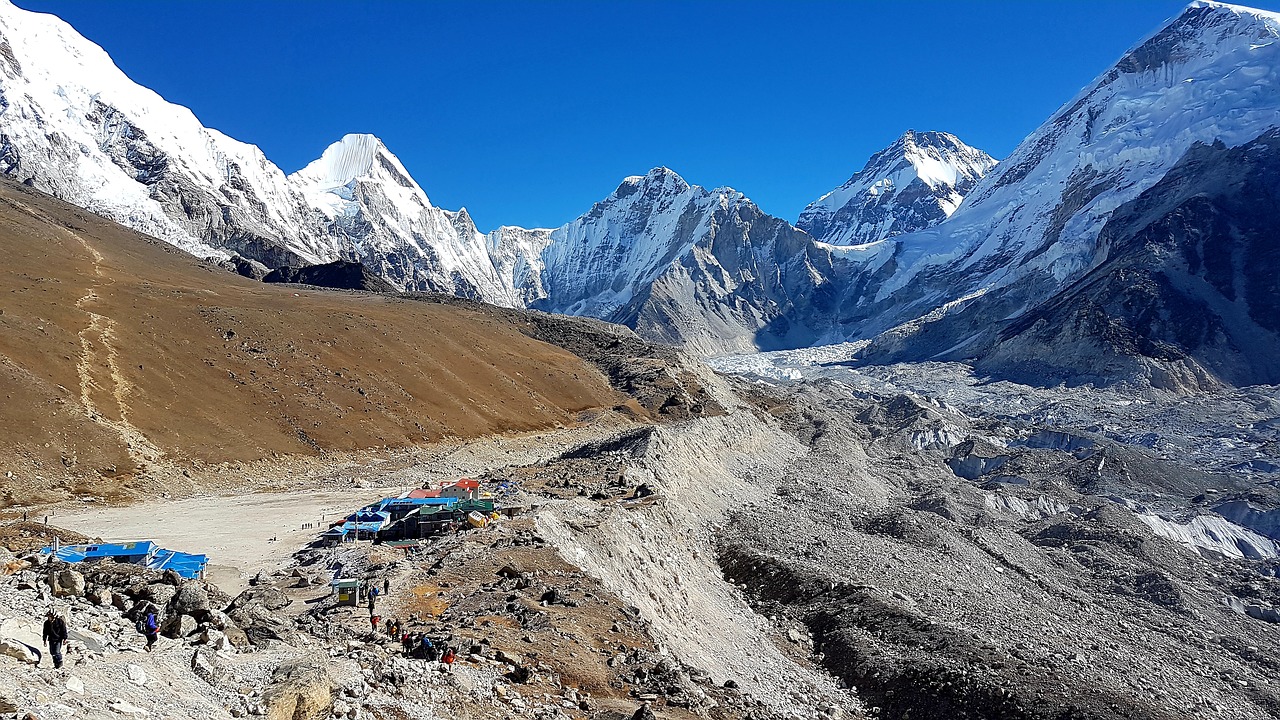introduction:
Permits and fees:
The Sagarmatha National Park Permit and the Khumbu Pasang Lhamu Rural Municipality Permit are required for the Everest Base Camp Trek. The cost of these permits varies based on the circumstances.
Fitness and planning:
The Everest Base Camp Trek is a physically challenging expedition that necessitates a high degree of fitness. It is advised that you prepare for the walk by doing aerobic activities, strength training, and trekking. It’s also critical to bring the proper equipment, such as warm clothes, strong walking boots, and a high-quality sleeping bag.
Altitude sickness: While climbing to high altitudes, altitude sickness is a regular concern. If you notice any of these symptoms, you should quickly descend to a lower altitude.
Accommodation and meals:
Along the Everest Base Camp Trek route, various teahouses provide modest lodging and food. The teahouses are modest yet cozy, with a bed, a blanket, and a pillow provided. The food is largely Nepalese and Indian, and it’s basic yet satisfying.
Safety:
If you follow the advice of your guide and take the required measures, the Everest Base Camp Trek is a safe journey. To protect oneself from the cold, bring a first-aid kit, plenty of drinks, and proper clothes.
Guided or solo trip: While it is possible to do the Everest Base Camp Trek on your own, it is suggested that you hire a guide or join a guided trek. A guide can assist you with navigation, lodging, and food, as well as ensure your safety along the walk.
The cost of the Everest Base Camp Trek varies according to whether you do it alone or with a guide.
Finally, the Everest Base Camp Trek is a demanding and rewarding trip that provides stunning vistas of the Himalayas as well as an opportunity to experience the Sherpa people’s distinct culture and friendliness. Anybody may finish this walk and make experiences that will last a lifetime with adequate planning, direction, and safety procedures.
The Everest Base Camp trek is a difficult endeavor that takes between 12 and 14 days to accomplish.
The journey begins and concludes at Lukla, which is only accessible by a short flight from Kathmandu.
Altitude sickness is a major concern on this climb, so take the necessary measures and acclimatize carefully.
There are several tea places along the walking trail where you may rest and enjoy the local cuisine.
It is critical to have enough cash with you because there are no ATMs or credit card services along the hiking route.
The trip takes you past various tiny settlements and provides breathtaking vistas of the Himalayan mountain range, including Mt. Everest.
The walk is physically difficult and calls for a high degree of fitness and endurance.
During peak season, the path can get crowded, so plan ahead of time for your walk and accommodations.
To access the Sagarmatha National Park, which is necessary for the walk, you must get permission and pay a charge.
Local guides and porters are available for hiring and can assist with route navigation.
Observe the local norms and culture, such as taking off your shoes before entering a shrine or residence, and dressing modestly.
Trek to Everest Base Camp
The Everest Base Camp Trek is one of the world’s most popular and beautiful routes. Before you begin this expedition, here are some things you should know:
Trek Duration: The journey usually takes 12-14 days.
Altitude Sickness: Altitude sickness can be fatal. Be sure you fully acclimatize, remain hydrated, and take all essential measures.
Trekking Season: The finest months to hike are March to May and September to November.
Permits for Hiking: To enter, you must have a hiking permit The Sagarmatha National Park and a TIMS card are required for trekking in the Everest area.
Physical Fitness: A moderate degree of physical fitness is required for the trek to Everest Base Camp. Before beginning on the walk, make sure you train properly.
Accommodation: Teahouses along the path provide lodging. They provide minimal amenities including a bed, blankets, and a communal restroom.
Food: Teahouses provide a range of meal alternatives. Dal Bhat is the most popular dish (rice, lentils, and vegetables).
Bring a water bottle with a water purifying system with you, or buy bottled water along the road.
Guides and Porters: Hiring a guide and/or porter is a good idea is advised for a more pleasant and risk-free trekking experience.
Communication: Most teahouses provide Wi-Fi, but it might be sluggish and pricey.
Respect the Culture: The Sherpa people, who have their own distinct culture and customs, live in the Everest area. Respect their habits and culture.
Environmental Responsibility: Help maintain the path and the environment clean by properly disposing of rubbish and using eco-friendly goods.
The Everest Base Camp Trek is a renowned and hard Himalayan hiking route in Nepal’s Khumbu area. It brings you to the foot of Mount Everest (8,848m/29,029ft) and provides amazing views of other peaks like Lhotse, Nuptse, Ama Dablam, and many more.
Typically, the flight starts from Kathmandu to Lukla, a tiny town in the Khumbu area. From there, you hike through the magnificent Sherpa villages of Namche Bazaar, Tengboche, Dingboche, Lobuche, and Gorak Shep before arriving at Mount Everest’s base camp. You’ll ride through lush woods, cross suspension bridges over roaring rivers, and marvel at the spectacular majesty of the Himalayan highlands along the route.
The best journey is done between March and May, and September and November when it’s summer season and the sky is clear.
It should be noted that the Everest Base Camp Trek is a difficult journey It necessitates a high degree of fitness and preparedness. Altitude sickness is a major danger that can be fatal, so it’s critical to acclimatize properly and follow the advice of y. It’s also critical to bring the proper equipment, such as warm clothes, strong walking boots, and a high-quality sleeping bag.
Overall, the Everest Base Camp Trek is a journey that provides beautiful views as well as an opportunity to experience the people’s distinct culture and friendliness.

